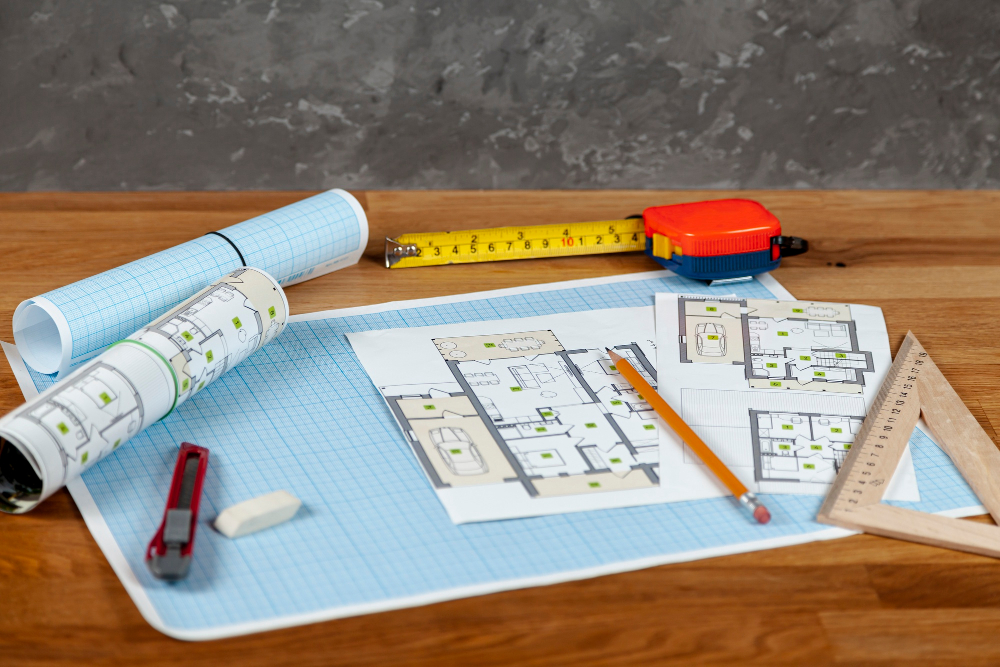Why Seismic Retrofits Are Critical in the Bay Area
The Bay Area sits on some of the most active fault lines in the world — the San Andreas, Hayward, and Calaveras faults.
For businesses operating offices here, earthquake preparedness isn’t optional. It’s a matter of employee safety, legal compliance, and operational continuity.
California’s evolving seismic codes mean office owners and tenants must stay proactive, especially during remodels. In 2025, several cities have mandatory retrofit programs impacting commercial properties — and understanding them early can save significant time and cost.
What Is a Seismic Retrofit?
A seismic retrofit strengthens existing buildings to withstand earthquakes by upgrading structural elements like:
- Foundations and footings
- Shear walls and bracing systems
- Roof-to-wall connections
- Non-structural components (ceilings, HVAC, suspended fixtures)
The goal: prevent collapse, reduce injuries, and minimize downtime after seismic events.
California Seismic Building Codes
Statewide Requirements
- Governed by the California Building Standards Code (CBC) and Title 24.
- Requires seismic design for all new construction and significant remodels.
- Older buildings (pre-1978) are often most affected.
Local Bay Area Ordinances
Several cities have stricter retrofit mandates:
- San Francisco: Mandatory retrofit for soft-story commercial buildings.
- Oakland & Berkeley: Similar programs targeting soft-story and unreinforced masonry (URM) buildings.
- San Jose & Palo Alto: Case-by-case mandates for URM and tilt-up concrete buildings.
When Are Retrofits Required?
- Major remodels exceeding 50% of building valuation.
- Change of use or occupancy (e.g., warehouse converted to office).
- Identified hazards (URM, soft-story, tilt-up concrete).
- Voluntary retrofits for insurance discounts or tenant safety.
Key Steps in the Seismic Retrofit Process
1. Structural Assessment
Hire a licensed structural engineer to evaluate seismic vulnerabilities and compliance gaps.
2. Permit and Code Review
Confirm local retrofit triggers and required documentation for your city.
3. Retrofit Design Plan
Develop engineering drawings specifying structural reinforcements.
4. Construction and Execution
Implement upgrades with minimal disruption to ongoing operations (often phased by floor).
5. Inspection and Certification
City inspectors verify compliance before occupancy resumes.
Cost of Seismic Retrofits in Bay Area Offices
- Soft-story retrofits: $50,000 – $250,000+ depending on size and complexity.
- URM retrofits: Can exceed $300,000 for mid-sized commercial buildings.
- Full structural upgrades: 1-3% of total building replacement cost.
Costs vary based on building age, type, and required seismic performance level.
Incentives and Financing Options
- Tax Deductions: Federal tax code allows depreciation of retrofit improvements.
- City Grants: Some municipalities provide low-interest loans or rebates for compliance.
- Insurance Discounts: Retrofitted buildings may qualify for reduced earthquake insurance premiums.
Benefits Beyond Compliance
- Employee Safety: Protects lives and prevents injuries during quakes.
- Business Continuity: Reduces downtime, critical for tech firms and essential services.
- Property Value: Retrofitted buildings command higher lease rates and resale values.
- Legal Protection: Mitigates liability risks post-earthquake.
Common Challenges
- Tenant Disruption: Construction noise and access restrictions during retrofits.
- Historic Buildings: Balancing structural safety with preservation requirements.
- Cost Overruns: Unforeseen conditions (hidden structural damage) may raise expenses.
Case Study: Soft-Story Retrofit in San Francisco
A 1960s office building in downtown SF underwent a mandated soft-story retrofit:
- Added steel moment frames and foundation anchors.
- Completed construction in phases to allow tenant operations.
- Achieved full compliance in 8 months, reducing insurance premiums by 20%.
Final Thoughts
Earthquakes are inevitable — but catastrophic damage doesn’t have to be.
By prioritizing seismic retrofits during office renovations, Bay Area companies safeguard their people, property, and productivity.
GC44 guides businesses through the entire retrofit process, ensuring compliance with local mandates and delivering earthquake-ready workspaces built for the future.





